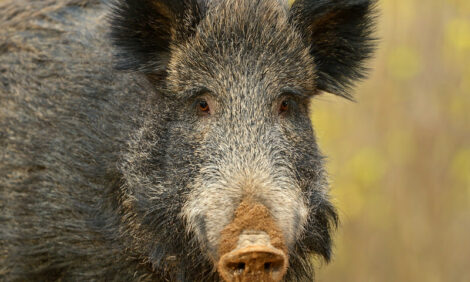



Cranswick Drops Penny as Producers Prepare to Start Culling
UK - Friday the 13th proved to be a particularly unlucky day for pig producers as feed ingredient costs scale new heights and pig prices start to wobble, writes Peter Crichton.

Although DAPP moved up a shade to 150.4p and Tulip set a reasonably positive note by standing-on, unfortunately bad news was lurking around the corner with Cranswick's disappointing move to drop its base price by a penny with Gill following suit at a time when producers need more not less.
Thankfully however Woodhead stood firm and so did Vion and the league table now reads as follows: 152p Woodhead, 150pTulip and Gill, 148p Vion, 147p Cranswick.
Demand for spot bacon was described as indifferent with most sellers able to achieve prices in the 150p region, but some opportunist buyers looked to do business at less than this later in the day.
The weakness of the euro which traded on Friday at 78.65p has also done nothing to help as far as the pigmeat supply/demand situation is concerned and coupled with indifferent European mainland pigmeat demand, as expected cull sow prices also drifted lower.
The three main cull sow abattoirs were operating in the 112p region and with more sows available due to producers' concerns over rising feed costs, this turned out to be more of a buyers' market than recently.
The outlook on the feed price front remains bleak as far as pig producers are concerned with ex-farm wheat quoted at 3206.80/tonne and forward quotes on the LIFFE market for November at 3189.00/tonne.
The latest USDA supply and demand estimates also make grim reading for pig producers with maize stocks estimated to be down by 37 percent and despite some forecast showers next week the ongoing drought is hitting wheat and soya yields hard with the result that British pig farmers are having to think in terms of 3400/tonne for spot soya.
A brief fag packet calculation reveals that producers will need at least an extra 20p/kg deadweight above current price levels to break even and unless retailers are prepared to recognise much higher production costs, it is inevitable that more herds will be culled in the months ahead.
Weaner producers continue to bear the brunt of the feed price explosion with the latest AHDB 30kg ex-farm weaner average continuing to slide and now standing at 341.37/head with 7kg weaners very hard to move with some now being traded in the 325/head region on a spot basis.
Whilst a spell of better weather would help in the short term, looking ahead the only answer to the price imbalance is for retailers to be persuaded to pay a realistic price for what is after all an extremely good quality high welfare British product.








